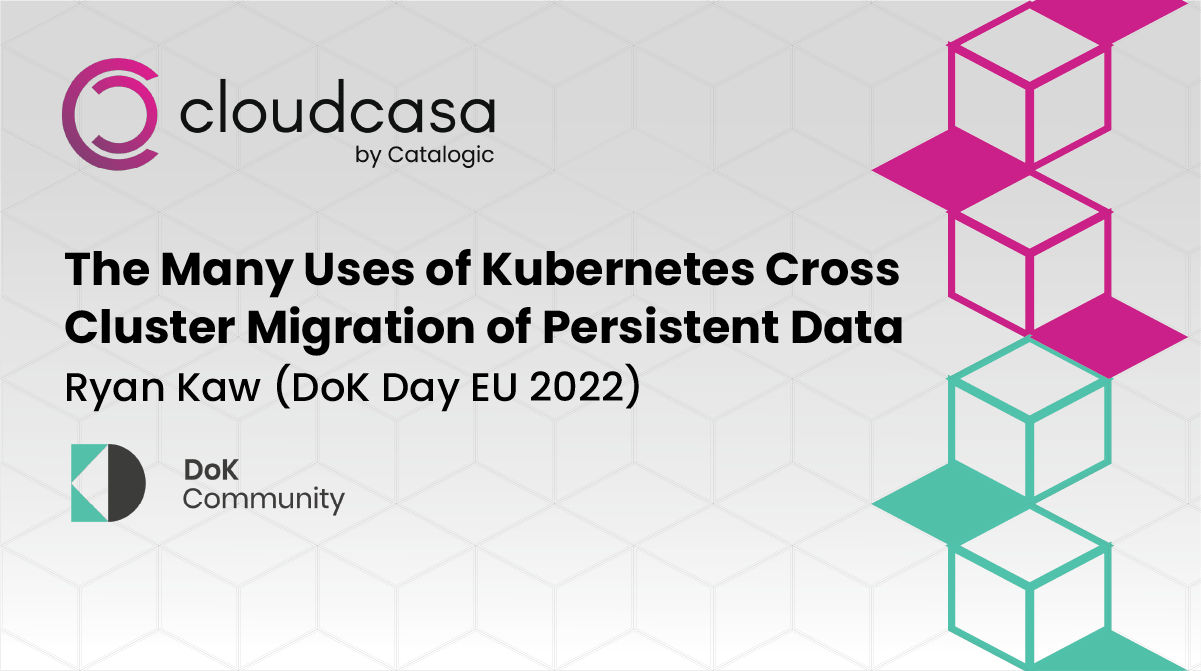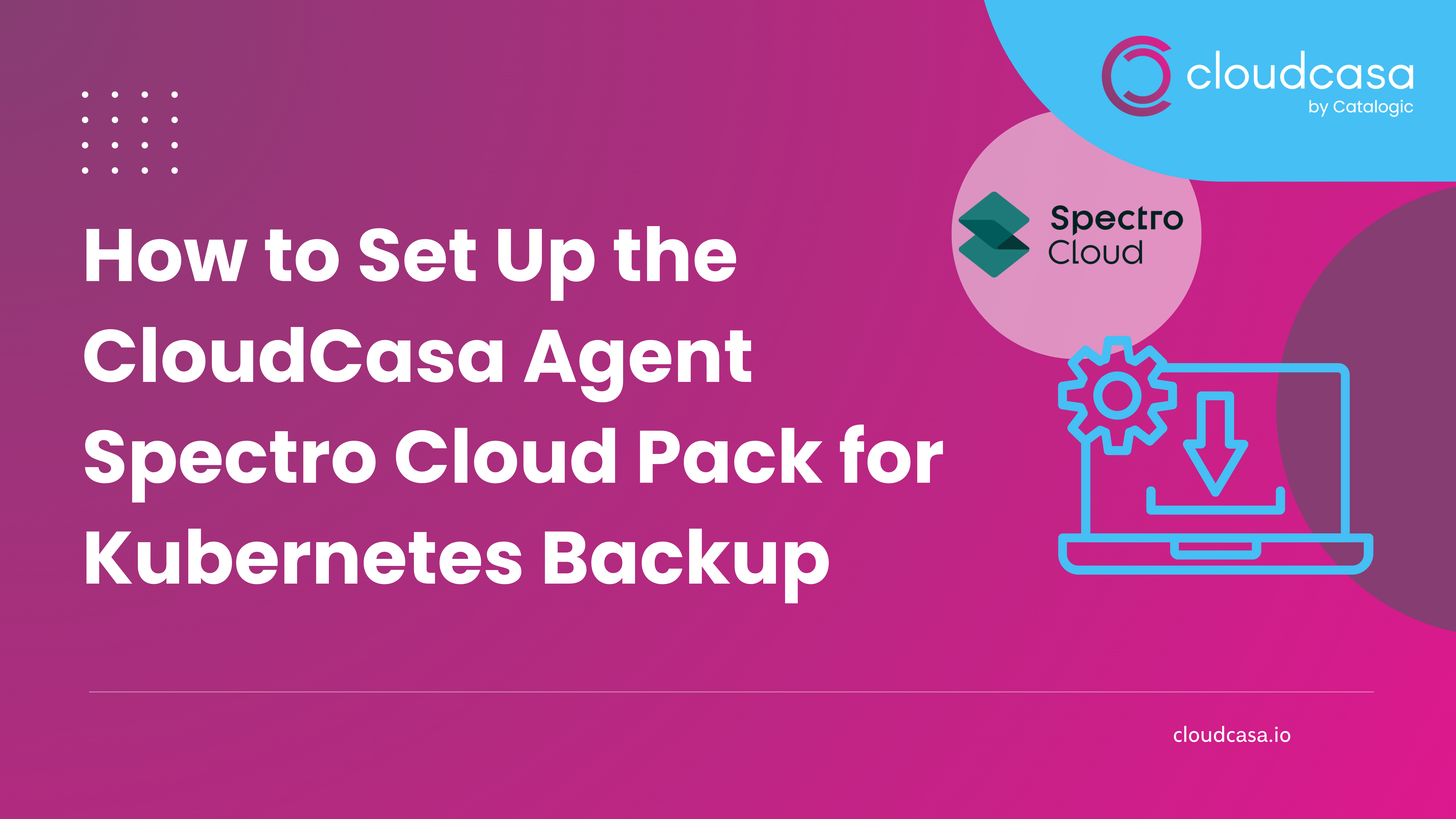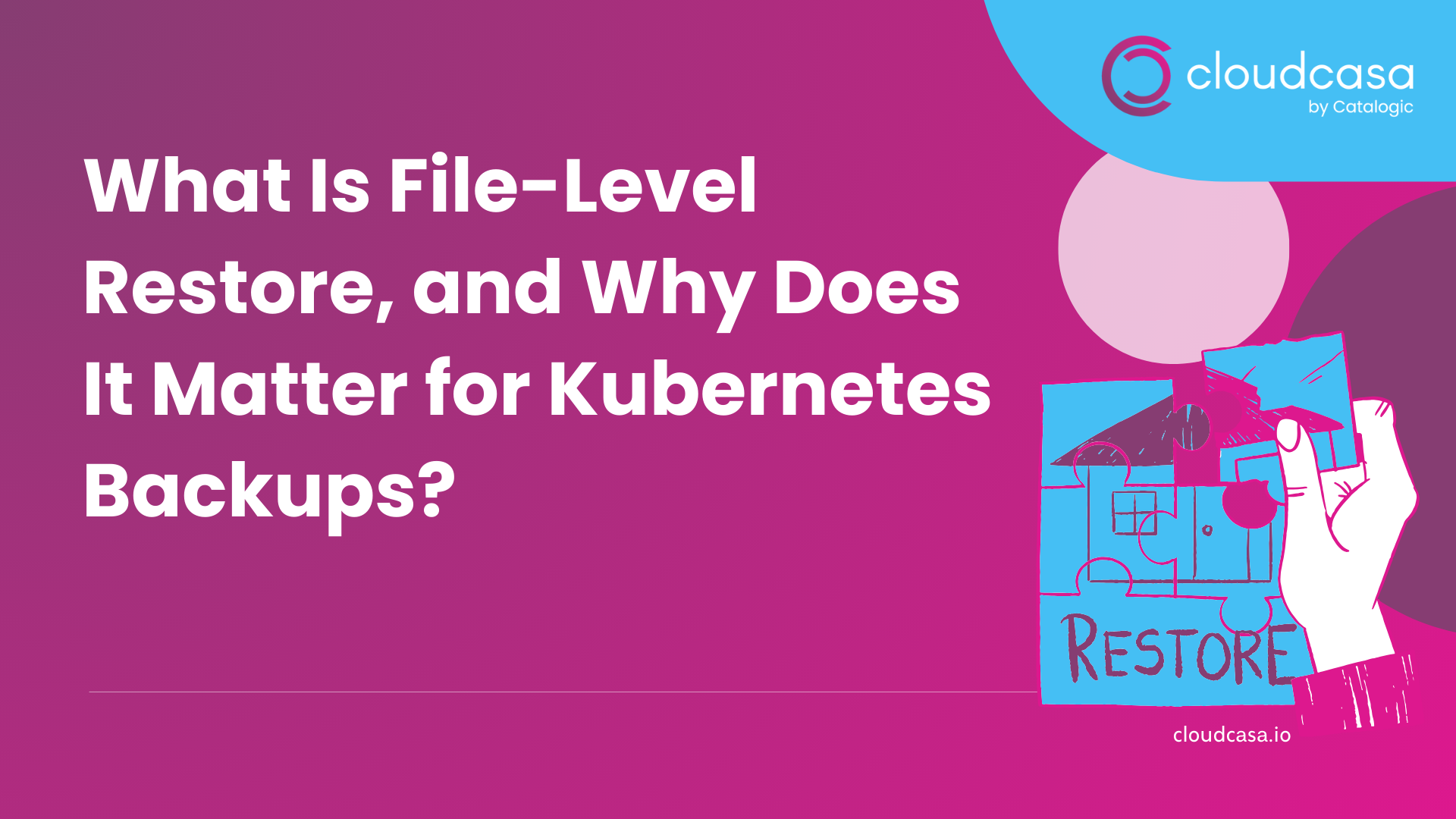Uses of Kubernetes Cross Cluster Migration of Persistent Data
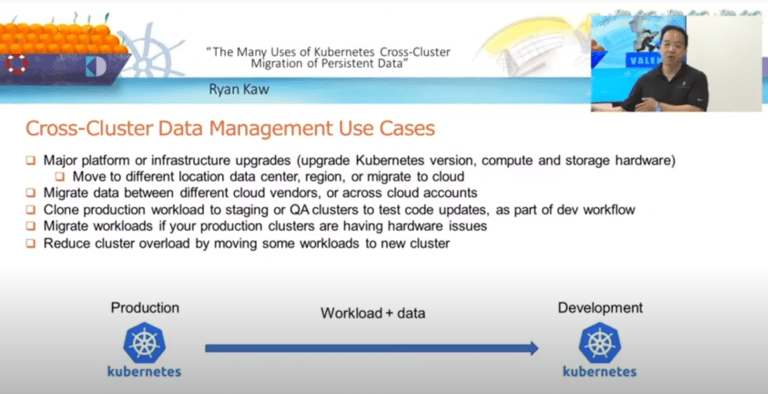
Fortunately, there are tools that provide this functionality. In this presentation we explored the different uses cases for Kubernetes cross cluster migration, and what is involved, and how these migration tools work. He covers some popular uses cases, such as, Disaster Recovery, Test/Dev, and performance testing. Migration could entail moving the entire cluster, or individual workloads. The components that need to be moved would include configuration and resources stored in etcd, and persistent data residing on PVCs. He also covers the uses cases and challenges for migration, and run through an example of using one of these migration tools.
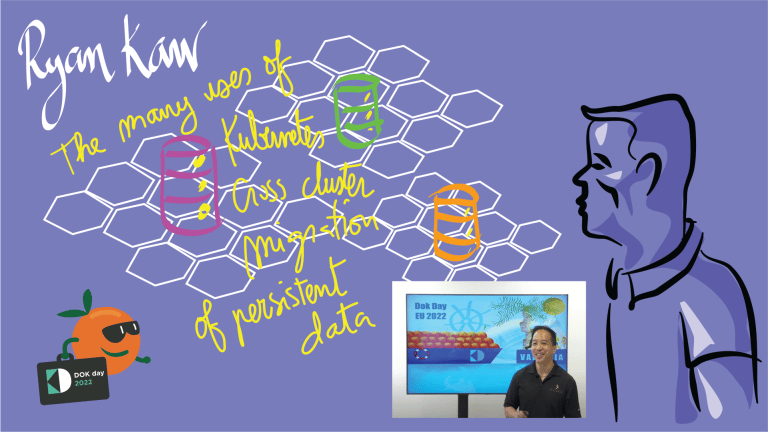
Watch the short 7 minute video on The Many Uses of Kubernetes Cross Cluster Migration of Persistent Data of YouTube! Try CloudCasa at no cost with our totally FREE plan today.
DoK Day EU 2022 @ KubeCon was an engaging and fun day for our early onsite team members. We chose to attend the virtual event in person to do our presentation and to meet the DoK team and attend the after party. It was a full day with 47 speakers sharing their knowledge on how to do Data on Kubernetes (DoK) well, along with musical interludes for over 2,800 virtual guests! And for those of us who attended in person, a follow-on cocktail party with more music and more entertainment from Bart Farrell.
Running stateful workloads on Kubernetes is gaining traction, but there are many challenges. Multiple clusters exist in most Kubernetes environments today, and the number of clusters are increasing over time. The reasons for having multiple Kubernetes clusters are many, for example, overcoming scale limits, reducing complexity, geo separation, redundancy and having separate production, staging, and development environments. Once you have multiple Kubernetes clusters, it can be useful to have the ability to easily move or duplicate workloads across these different clusters. Kubernetes does not have a native method to allow migration or duplication of workloads across clusters.

Fortunately, there are tools that provide this functionality. In this presentation we explored the different uses cases for cross cluster migration, and what is involved, and how these migration tools work. He covers some popular uses cases, such as, Disaster Recovery, Test/Dev, and performance testing. Migration could entail moving the entire cluster, or individual workloads. The components that need to be moved would include configuration and resources stored in etcd, and persistent data residing on PVCs. He also covers the uses cases and challenges for migration, and run through an example of using one of these migration tools.

Watch the short 7 minute video on The Many Uses of Kubernetes Cross Cluster Migration of Persistent Data of YouTube! Try CloudCasa at no cost with our totally FREE plan today.
